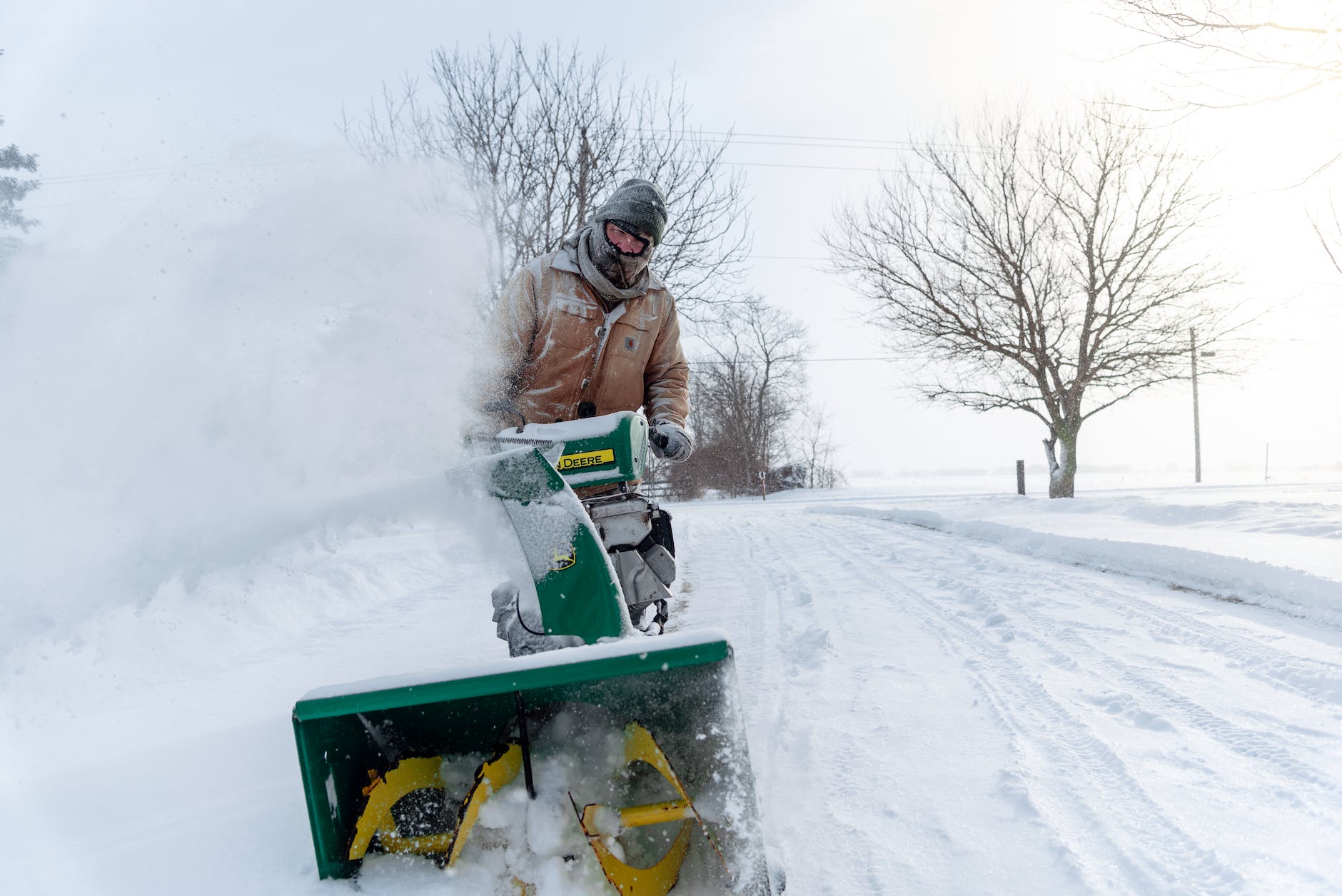Want to get your snowblower to throw farther? Let’s talk about a few different customizations and maintenance tips to increase snowblower output.
Over time you might be finding that the distance your snowblower is throwing snow has decreased. Sometimes, this can be due to the weight of the snow itself; wet, heavy snow naturally doesn’t travel as far.
That being said, you’ll come to know your machine and its capabilities. Once you start consistently losing distance, you’ll know it.
So how can we remedy this problem? Well, let’s first discuss the causes so we can understand how to fix it.
Too much friction
Most snowblowers have metal augers, impellers, impeller housings, and discharge chutes. They’re beautifully painted when they’re new. That’s not just for appeal; the paint provides an important function.
The paint covers the bare metal to protect it from rusting, and it also decreases the friction of the snow. As the machine gets used, more and more paint will wear off of the surfaces.
Dings and dents will occur, and if it’s not corrected, rust will begin to form. All of these microscopic fissures increase the amount of friction and slow the speed of the traveling snow. Therefore, the snow will lose distance because it has been impeded.
How to repair a friction issue
As part of your routine maintenance, be sure to assess the condition of the painted surfaces. Keep them clean, remove any rust, and touch up the paint as needed.
Additionally, coat the surfaces with a silicon polymer spray to decrease the friction even further. I’ve tried using cooking oil as a cheap substitute, but it just doesn’t last as long.
A silicon polymer is water-phobic so the snow will not stick to it. That will also increase its longevity so it doesn’t wear off as quickly.
Too much wear
The second problem that can cause reduced throwing distance is too much wear. Specifically, wear on the impeller and impeller housing.
This happens through normal use (or in my case, a gravel driveway). Rocks and/or ice chunks can get sucked in during operation and get stuck between the impeller and the housing.
Not only will this cause a shear pin to break, but over time the “wings” of the impeller and/or the housing will become deformed.
Left untreated, the impeller housing can completely tear out. The more the wear increases, the larger the gap develops between the impeller and housing.
The larger the gap, the less volume of snow is actually thrown. This can then accumulate within the housing and cause the chute to become clogged.
How to repair a worn impeller or housing
Determine the extent of the damage. If the wings of the impeller are bent or cracked, re-form and weld them back into place. You might need to weld some supports since this metal has become stressed.
If the housing is distorted outwards, heat it up and try to hammer it back into place. Weld any cracks or tears closed. We want to decrease the gap between the housing and impeller as much as possible.
An added step is a rubber snowblower impeller kit. These rubber paddles bolt onto the impeller wings, and then you have a sacrificial rubber paddle that replicates the original impeller.
The paddle will then compensate for the larger gap to maximize the amount of snow that is gathered and thrown out of the housing.
Improper travel speed
There’s a bit of a learning curve and science behind using a snowblower appropriately. There is definitely a fine line between too fast and too slow of a travel speed.
A snowblower is designed to throw snow a maximum distance with a full housing. If your travel speed is too slow, then it can’t accumulate enough to get the centrifugal force to be thrown maximally.
Conversely, if the travel speed is too fast, then the horsepower of the engine cannot compensate for the added workload to churn through the snow.
Travel speed also has to consider snow conditions. Wet, heavy snow will require a slower speed than light and fluffy snow. Deeper snow will need a slower speed than lighter snow because the housing will fill up faster.
So if you’ve already done proper maintenance on your machine and added some rubber paddles, experiment with travel speed to find the optimal throwing distance.
Recap
Proper maintenance and repair can increase the distance a snowblower can throw snow. Additionally, learning how fast to travel during different snow conditions can increase your output.
Did I forget anything? Let me know in the comments below!
As an Amazon Associate I earn from qualifying purchases.





2 thoughts on “How to Get Snowblower to Throw Farther”